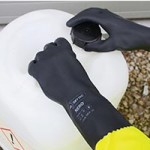Noise at Work Mistakes By Tom Shelton, Cirrus Research
 Last year we talked about the 5 most common mistakes that are made in the workplace but as the months wore on it become apparent after speaking to clients that there are actually six.
Last year we talked about the 5 most common mistakes that are made in the workplace but as the months wore on it become apparent after speaking to clients that there are actually six.
After the classic five errors of – doing nothing at all about noise risks, not using the right equipment to get accurate measurements, measuring incorrectly, not calibrating your meter properly or regularly and, finally, not trying to control noise risks in the first place – I now want to expand that to six by adding not keeping your data.
Why is this a mistake? Without the data you will not have an historical record of the noise levels around your business – this would show any improvements that have been made over time. Employees could also claim they suffered from noise-induced hearing loss (NIHL) due to excessive noise exposure and demand compensation but you would be unable to prove that the noise levels were not excessive at the time. Finally, you could be losing valuable time in having to constantly repeat measurements you have already taken.
Fortunately, there is an easy fix. Download your noise measurement data from the instrument to the computer where reports can be created and saved. You will need a data order phentermine united states logging sound level meter that stores the data and the appropriate software but this is a worthwhile investment.
It’s worth noting that Cirrus includes the NoiseTools software with all data logging sound level meters and noise dosimeters, which enables you to easily download, analyse and save your measurements in a variety of formats.
Once you’ve exported your reports, keep a simple filing system when records can be stored and referred back to. You may you to consider naming conventions for your files – date/time/place/machine/employee etc.
By keeping records on file you are helping to insure against former employees coming back claiming they suffered NIHL years after leaving your business and wanting compensation. You need to be able to show that the noise levels were never dangerously high during their time with you and the best way to do that is to look at historic data.
It is always advisable to regularly reassess noise risks and create new reports but don’t delete the old ones. It is simply worth taking up a few megabytes on your server to ensure peace of mind for the future.
To recap – the other five mistakes can be downloaded here:





